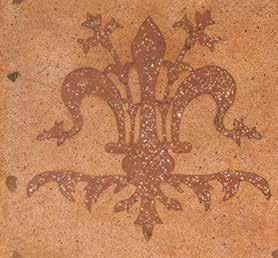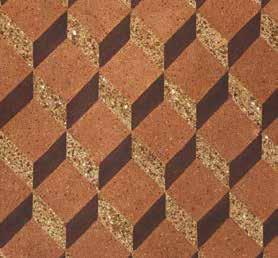
3 minute read
MATERIALS AND THE RESTORATION OF HISTORICAL FLOORS. F.lli Feltracco
info@feltraccorestauri.com www.fratellifeltracco.com
The restoration of a historical floors
Advertisement
Each floor has its own characteristics and history. The study, the analysis, the use of natural materials and the passion for restoration allow us to obtain unique restorations of any ancient floor
By studying the past and the history of a floor, the evolution of the historical floor has been guided without loosing sight of the respect of man and the environment. Every stage of the creation of our floors is still proudly realized with ancient materials and cutting edge systems. The true value of our works lies in the hands and in the heart of our artisans and their extraordinary experience and knowledge allowing us to create precious and unlimited productions for the floorings. The pictures shown above are an example of a floor restoration that was carried out in Venetian Villa of 1700. The photo, in the upper left, shows the presence of a particular bi component adhesive on the surface of the 18 th century floor, this one was normally used to paste the moquette on top of the floor. In fact, the goal of this work, as seen in the photo in the upper right, was to cut the adhesive without water and without smoothing the historic inert in order to maintain the relief on the surface of the floor that is typical of the original one. The mixture for the floor is composed by: natural lime, shattered terracotta selected in grading curve, marble inserts and natural coloured earths, the whole is well beaten and polished and provide the floor an excellent mechanical resistance and high elasticity. In the example of the restoration work above, the floor does not present technical joints, as the commissioning work took place in one continuous pour. The final phase of the grouting, as shown in the picture on the left, is very important and it is carry out manually by mixing cooked linen oil, hydrated calcium sulphate and coloured hearths with the aim of coming closer to the original cromia of the floor. In this work, moreover, the dry polishing technique with immediate dust suction was also fundamental to keep the colours of the historic floor unchanged, to avoid damages to the surrounding walls and to optimize the processing times. Finally, to obtain a particular shine of the eighteenth-century historical floor, linen oil and natural waxes were used without any cementitious and resinous material. A scientific research at the Kyoto Institute of tech


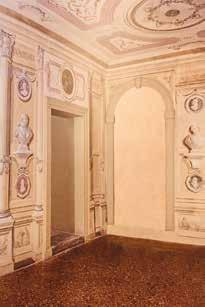
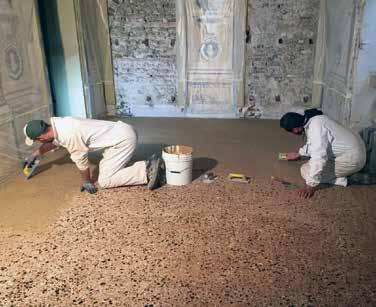
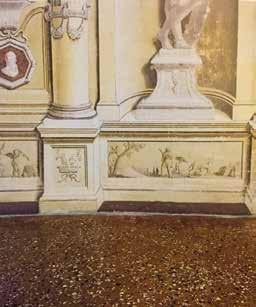
nology was also carried out on this work and analyzes were performed using spectroscopic techniques such as Raman spectroscopy, allowing to study the chemical-physical charac teristics of the sample under examination. The restoration of a historical floor allows to obtain a surface of unlimited extension and completely free of technical joints and it can also be enriched by various decorations with the most elegant shapes, some examples are shown in the pictures below. Furthermore, thanks to the use of a wide range of coloured natural lands, infinite chromat ic possibilities can be obtained. Soils and natural stones, coming from all over the world, combine with natural lime creating an elastic mixture. With our restoration system we can preserve any historic floor, reproducing the original one and creating new floors more natu ral and warm, also suitable for heating floor systems, allowing an important energy saving and making homes much more welcoming.
“Your satisfaction, attention to detail, the passion to make You feel emotions are our daily aspirations, always, You are at the centre of our work”
Fratelli Feltracco


